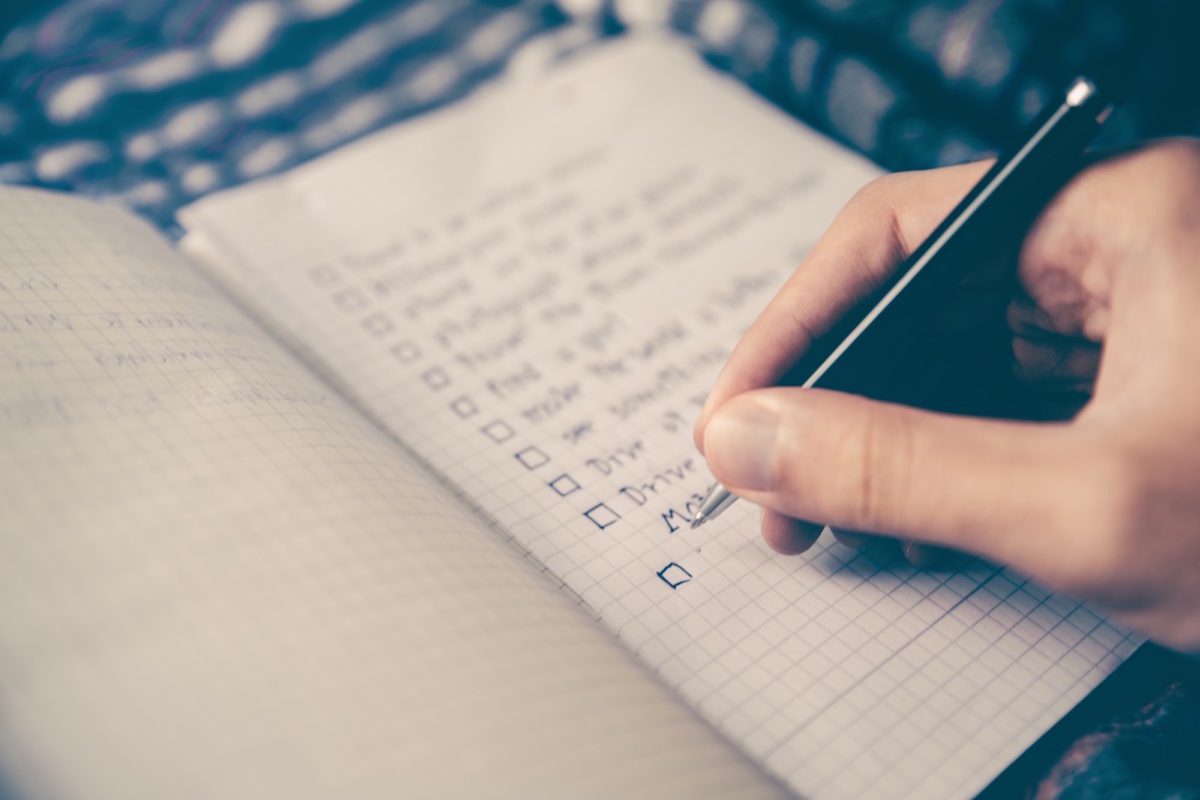If you read my previous post on what personal development is, you’re probably thinking that this is very nice but it doesn’t really give you a starting point. That is why I have a put together the step-by-step guide below to get you started and set the wheels in motion.
Remember that developing yourself is not something you start and finish in an hour, it’s a lifetime process. You might complete the following tasks in one day but you will most likely come back to what you wrote later to update, add or remove things, and adjust your plan. Use it as a reference point.
1 | Start by answering these questions in writing
- What do you love the most about your current role? The least?
- What do you do well?
- What could you improve in your day-to-day?
- What are your strengths?
- What are your core values?
- What is important to you in life?
- Why do you work every day?
- Who is your role model and why?
- When are you the happiest?
- What does success look like for you?
- How will you know when you are successful?
These questions will help you start reflecting on who you are so you can better align your career to yourself.
2 | Answer another set of questions, this time on your career goals
Answer these questions one after the other, starting from the long-term:
- What is your long-term vision? Where do you see yourself in 10 years?
- What needs to be achieved in the medium-term (2 to 5 years) for this long-term goal to become a reality?
- What needs to be done in the short-term so you can achieve your medium-term goals (in the next 6 months to 1.5 year)?
Put all your answers in one single document that will become your personal development plan.
3 | Highlight the main words of each answer
What are the most important words you used? Look at what you wrote and highlight these words. Is there a common thread, a pattern, recurring topics? Reflect more and start linking your answers to each other. How do your goals and vision fit your personality and your values?
This additional reflection is something you should do over the course of a few days or weeks to let your subconscious process all that and bring you more answers.
4 | Create a summary
Organise your personal development plan in different sections to gain clarity. If you wrote down your answers on paper, take a new sheet to create a summary. The different sections could be:
- Your strengths (what you’re good at)
- Your skills (what you know)
- Your areas of development (what you’re not good at)
- Your goals:
- Long-term vision
- Medium-term goals
- Short-term goals
5 | Turn your plan into actions
Being aware of where you are and where you want to go is a great first step. Now take it to the next level by committing to actions. What are you going to do today that will help you achieve your short-term goals? Remember that what you do today has a direct impact on your chances to reach your long-term goals.
Add one last section to your plan called “Actions”. Start with 3 simple things you will do. Write a description, the time frame you give yourself to complete them.
6 | Find who can help you
Sharing this process with people you trust is a great way to make the plan more relevant and complete. They will be able to add strengths and areas of development you forgot or are not aware of, and they could also act as accountability partners, checking in with you to make sure you did what you said you would do. You don’t have to do this alone.
We created resources to help you build your career planning document.
You can download them for free.

